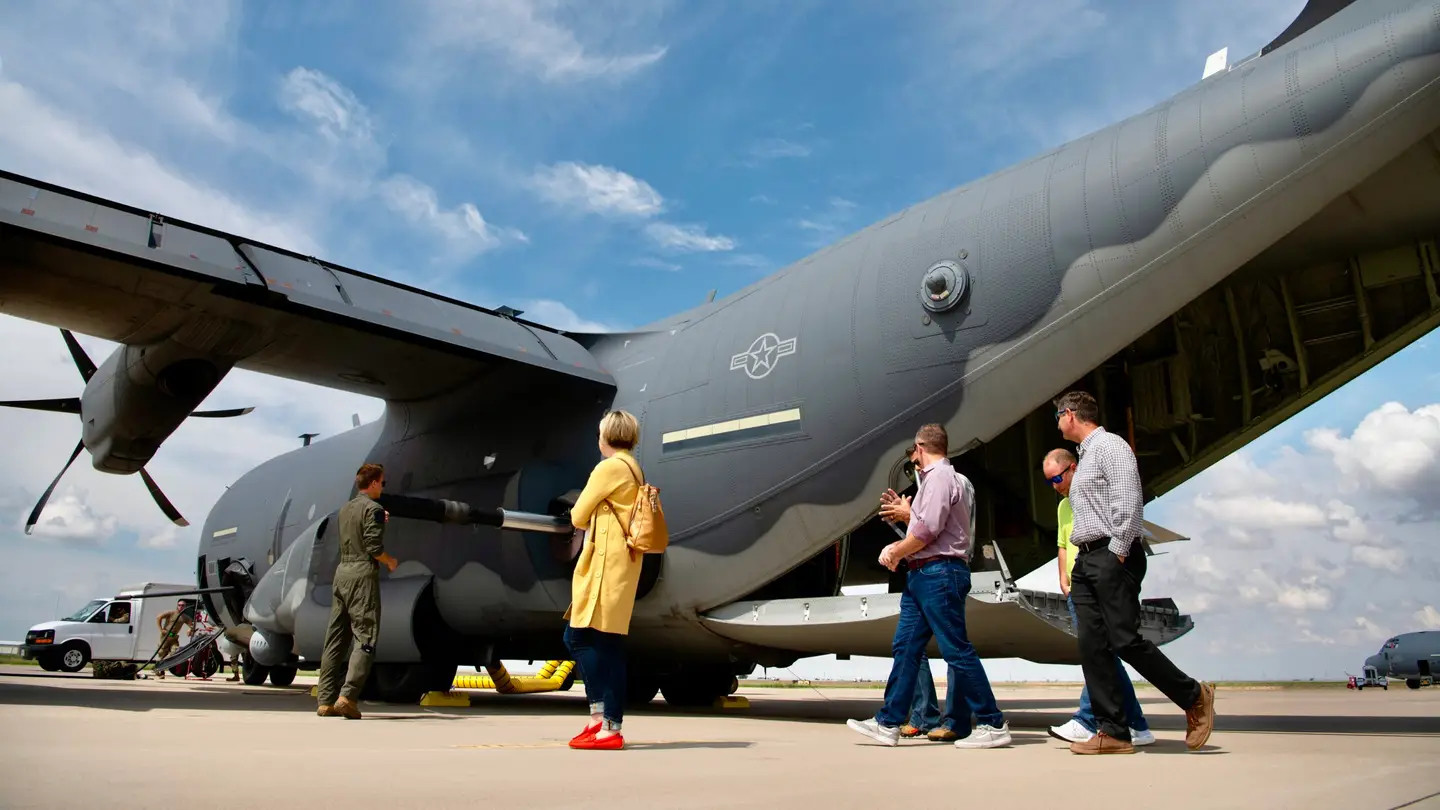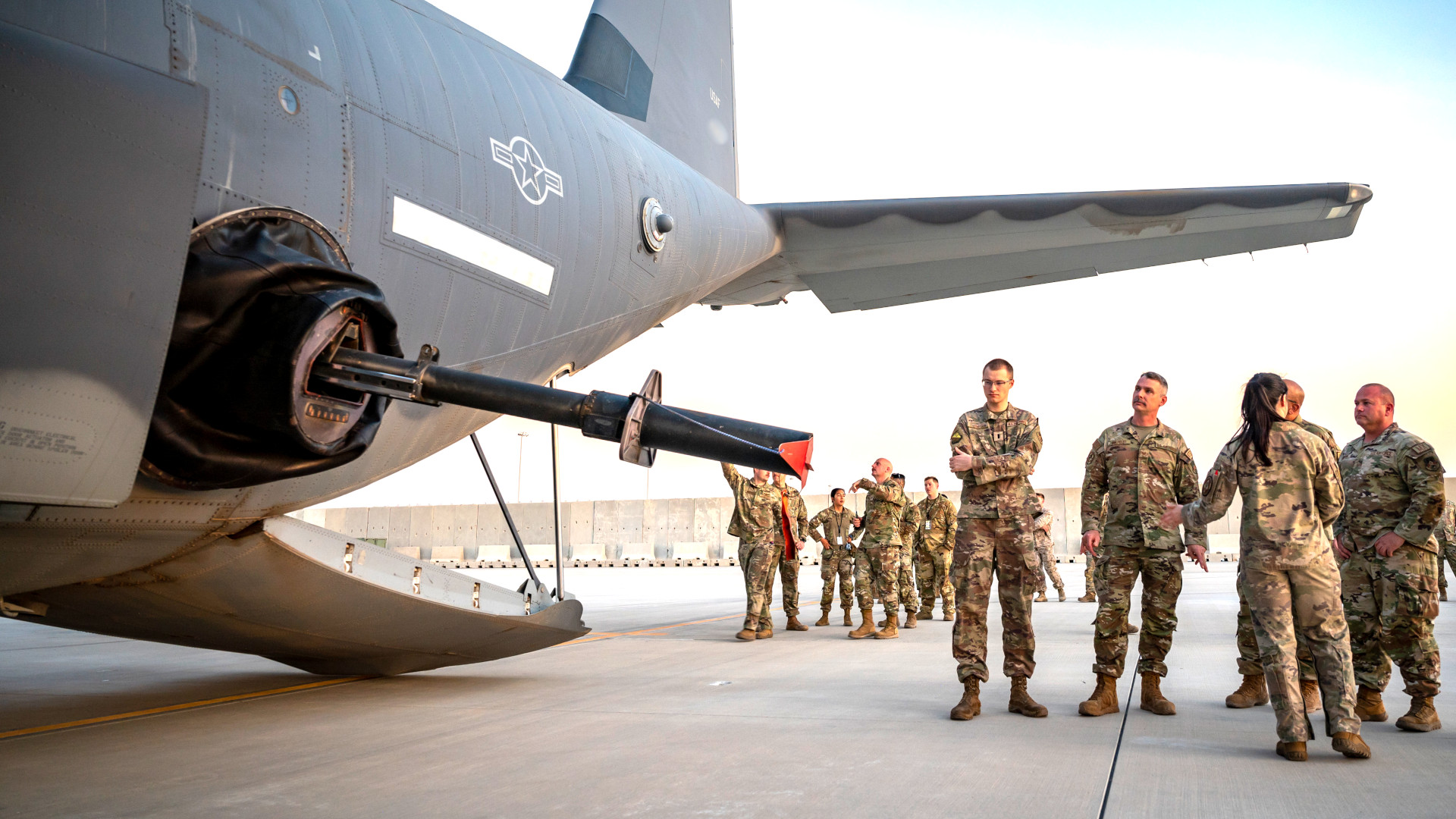The Air Force’s AC-130J Ghostrider gunships might lose their iconic 105mm howitzers, starting within the next two years or so. The deliberations center heavily on a desire for more stand-off strike capacity, especially ahead of any potential future high-conflict, such as one against China. The service has already been testing special operations C-130s, along with other cargo aircraft, as possible cruise missile carriers using palletized launch systems.
Stephen Losey from Defense News first reported that the future of the 105mm howitzer on the AC-130J, a key feature found on multiple AC-130 variants dating back to the Vietnam War, is in question earlier today. At present, the Air Force has 30 Ghostriders, the only version of the AC-130 now in service. Depending on what course of action the Air Force ultimately pursues, those aircraft could begin seeing their big guns removed in 2026.

The current fixed armament configuration of the AC-130J includes a 30mm GAU-23/A Bushmaster automatic cannon and a 105mm howitzer, both firing out the left side of the fuselage. There are no plans to remove the 30mm gun, per Defense News‘ reporting.
AFSOC has already been in the process of integrating improved 105mm guns onto its Ghostriders in place of the aging and increasingly unsupportable versions of the Cold War-era M102 howitzer, and 17 of the gunships have been retrofitted so far according to Defense News. Modified M102s were first added to certain AC-130 variants in the 1970s.


As can be seen in the video below, the AC-130J can also employ a wide range of precision-guided bombs and missiles from pylons under their wings, as well as through launch ports built into their rear loading ramps. The latter launch system is designed to work specifically with munitions pre-loaded into standardized Common Launch Tubes (CLT).

“To field operational concepts and technologies relevant in the current and future strategic competition environments, AFSOC [Air Force Special Operations Command] is currently assessing the capabilities of the AC-130J Ghostrider,” the command told Defense News. “The goal of this review is to enhance the lethality, versatility, and adaptability of the AC-130J in a wide range of operational scenarios while ensuring it remains a vital asset within AFSOC.”
The big question behind this review seems to be about what AC-130Js will be able to contribute in a future high-end conflict against an opponent like China with dense integrated air defense networks.
Traditionally, AC-130s have worked very close to their targets, often in direct support of special operations and conventional forces on the ground. In those scenarios, the breadth of armament options on the gunships, as well as their ability to loiter over areas of the battlefield for protracted amounts of time, have made these aircraft uniquely capable and flexible assets.

The 105mm howitzer, specifically, combined with the very stable firing platform the AC-130 provides, offers a very accurate weapon that can deliver a significant degree of destructive effect on a precise location, and then immediately be redirected to fire on another target. Multiple ammunition options mean that it can be loaded with a round that is most optimal for whatever it is firing at for each shot.
At the same time, the vulnerability of the core AC-130 platform was well established by the end of the Vietnam War. Even with successive survivability improvements over the years, the gunships almost exclusively operate today in permissive environments and at night.
“In a scenario where you’re not able to just have free rein and fly over a friendly location for three hours, how do we beat our adversaries at that game?” an anonymous Air Force official posed a rhetorical question to Defense News. “If they take away our ability to loiter for extended periods of time, what’s our counter-punch?”
It’s worth noting that the Air Force originally envisioned the AC-130J as more of a precision-guided munitions truck and having a gun armament consisting of just the 30mm cannon. The decision to change course and integrate the old 105mm howitzers onto the Ghostriders (as well as the now-retired AC-130W Stinger IIs) only happened relatively recently.

What armament AFSOC would add to the AC-130J if it were to remove the 105mm howitzers is unclear and is the purpose of the review that is now ongoing. As noted, the 30mm cannon, which offers another, albeit less powerful tool for rapidly and flexibly engaging very specific points on the ground, would still be retained, as well. So the AC-130J would not lose its rapid direct fire capability.
The Air Force was planning to flight test a high-energy laser directed energy weapon on a Ghostrider this year, but it is unclear whether or not that has occurred or if that is still the goal. The future of that project looks increasingly uncertain as time goes on and The War Zone has reached out for more information about its status.

“Our intent with [the airborne high-energy laser] right now is to continue and finish the demonstration for [the Office of the Secretary of Defense], and we will see if we are able to actually pick it up as a weapon system,” a second anonymous Air Force official told Defense News. “Right now, it doesn’t look like we might. We just don’t know; the decision has not been made yet. But in short, the laser can’t go in where the 105[mm cannon] is.”
Regardless, a high-energy laser wouldn’t be the kind of stand-off strike weapon that AFSOC appears more interested in adding to the AC-130J’s arsenal now.
AFSOC has expressed interest in arming the AC-130Js with small form-factor cruise missiles, possibly able to fit inside CLTs and be launched from the rear ramp, for an added stand-off punch. There have been demonstrations in the past showing that CLT launchers can be used to deploy small drones in mid-air.
The possibility of AC-130Js being used in the future as drone swarm motherships could open up interesting possibilities. The Ghostriders have an extremely capable self-defense and threat awareness suite, advanced communications, and are operate regularly at low altitudes. These traits could allow them to fly right to the edge of highly contested airspace and unleash a horde of drones that would fly forward into more dangerous areas.

This networked swarm could include various types of uncrewed aircraft, including loitering munitions, also known as kamikaze drones, and types configured in other ways, including as airborne sensor nodes or electronic warfare jammers. The entire group could then help search for targets for stand-off strikes, scramble enemy radars to protect friendly forces, and even directly launch kinetic attacks on any threats that might pop up, among other tasks.
The value of this kind of capability is something The War Zone has previously explored in detail in the context of potentially turning the P-8 Poseidon maritime patrol plane into a multi-role ‘arsenal ship.’ Separately, U.S. military wargames, as well as independent ones carried out under its auspices, routinely show the game-changing potential of swarms with hundreds or even thousands of individual drones, especially in the context of a potential clash with China over Taiwan.
Depending on what the rear cargo bay of the AC-130J looks like after the removal of the 105mm howitzer, there is a question about whether the Rapid Dragon palletized munitions system could be used with these aircraft. Rapid Dragon has been tested on AFSOC MC-130 and EC-130 aircraft already as a means to quickly turn those aircraft into launch platforms for AGM-158 Joint Air-to-Surface Standoff Missile (JASSM) series cruise missiles and other munitions. Rapid Dragon has also been tested in combination with Air Force C-17 cargo aircraft.

Earlier this year, U.S. Special Operations Command (SOCOM) announced plans to test an AC-130J with a new active electronically-scanned array radar, which could increase the aircraft’s organic ability to find and engage targets at stand-off distance. Ghostrider crews could also use targeting information provided by offboard sources.
“What does the future fight look like?” the first anonymous Air Force official Defense News spoke to said. “Do we need the 105[mm cannon]? … We don’t want to pigeonhole ourselves in strictly special operations. That’s where our expertise lies, [but] we also want to expand capabilities and offer something up to the joint force as well.”

At the same time, there can only be questions about whether the option of using the relatively small and niche fleet of AC-130Js for things like helping to launch mass cruise missile strikes makes sense. Even in a future large-scale high-end conflict, Ghostriders could still be called upon to perform their existing core missions in various contexts. Similar questions have arisen regarding the use of the Rapid Dragon palletized munitions system on existing airlifters, which would be heavily tasked to perform their primary mission sets in any fight against China or another major adversary.
In many ways, the debate that looks to be shaping up within the Air Force around the AC-130J’s gun armament feels more about the future of the Ghostriders in general. There are regular reports, including from The War Zone, about the U.S. special operations forces community having to do significant soul-searching after two decades of near-constant counter-terrorism missions around the world with the focus having now shifted to preparing for potential future high-end fights.
In the end, whether or not the AC-130Js keep their 105mm howitzers remains to be seen. Whatever decision the Air Force makes could have broader ramifications for the future of the Ghostriders.
Contact the author: joe@thedrive.com
